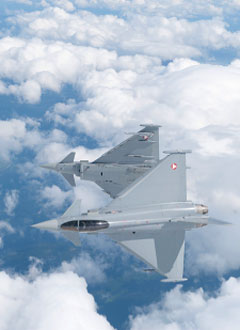Your challenge

While civil voice communications systems (VCS) must provide safe and reliable communications, the demands placed on communications systems in an air defense (AD) environment go one step further. Secure communications and high flexibility to adapt to changing mission needs are key requirements for AD communications solutions.
A modern AD communications solution must address the challenge of integrating diverse, established technologies deployed in the air and on the ground into one communications system. While taking care of previous approaches, a state-of-the-art solution must provide a future-oriented concept and advanced technologies so that military organizations can take advantage of future developments.
Secure, flexible, bandwidth-efficient and interoperable solutions are needed.
Rohde & Schwarz solution
The challenges facing AD systems can be well addressed with an IP-based communications infrastructure such as provided by the R&S®VCS-4G.
Secure communications
In AD operations, usually different missions are run at the same time. These require different levels of security, which need to be applied dynamically to the ground-ground and air-ground communications paths. Providing standardized interfaces, VoIP systems support various means to allow multilevel security applications, ranging from commercialoff-the-shelf up to highly customized solutions, whatever addresses a mission’s needs best.
Flexibility
VCSs deployed in AD environments must offer higher operational flexibility than civil VCSs. Different missions, national or international, are run at the same time, with communications needs changing during ongoing missions. IP-based VCSs provide air traffic controllers with means that allow them to respond quickly and flexibly to changing communications needs. For example, controllers can select radio resources and change radio parameters as required, and they can flexibly implement mission plans.
Interoperability
Interoperability for an IP-based VCS in an AD scenario not only means connectivity to EUROCAE ED-137 compliant VoIP radios from different manufacturers. Interoperability in AD scenarios also involves integrating existing radios, telephone lines and crypto devices and providing new functionalities such as combat net radio access (CNRA). In line with customer needs, IP-based VCSs with their distributed architecture deliver modular, highly reliable and scalable solutions and feature a wide variety of standardized communications interfaces. This makes them an ideal choice for installations ranging from mobile to nationwide AD operations centers. Open interfaces allow seamless connectivity with command and control applications.
The R&S®VCS-4G features all the advantages of a truly IP‑based VCS, to the benefit of military organizations.
Deployment

AD organizations use fully IP-based communications solutions from Rohde & Schwarz as air-ground and ground-ground communications systems to control military flights in their national airspace.
The Rohde & Schwarz solution mainly contains controller working positions and gateways of the R&S®VCS-4G voice communications system, as well as R&S®M3SR Series4400 radios. The ground communications infrastructure of this fully IP-based VCS is secured by IP crypto devices. The air-ground communications paths are secured by integrating existing crypto devices. Future extensions with additional radios are possible at any time. The R&S®VCS-4G conforms to the EUROCAE ED-137 standard, allowing ED-137 compliant radios from any other manufacturer to be integrated.
For communications with the pilots, controllers can choose from different communications modes (secure or plain) and freely select the radios required for their missions. Remote control of the radios from the controller working positions provides controllers with the flexibility they need to select preconfigured radio settings as required for their missions.
System overview
- Rohde & Schwarz controller working positions
- R&S®M3SR Series4400 software defi ned radios
- Secure communications infrastructure


